The DeepCool Captain 240 EX RGB AIO Cooler Review: Pump it Up, Without the Noise
by E. Fylladitakis on December 14, 2017 9:00 AM EST- Posted in
- Cases/Cooling/PSUs
- AIO
- Deepcool
- Cooler
The DEEPCOOL Captain EX 240 RGB Cooler
The DEEPCOOL Captain EX 240 RGB is a classic CPU-only AIO cooler design, with the CPU block assembly attached to the radiator via two hoses. The CPU block assembly includes the CPU contact plate, the pump, RGB LED lighting, and the speed control electronics. All of the parts are black. The tubing is thick and has a nylon braiding surrounding it. It is not very flexible but it certainly is very tough. DEEPCOOL has the tubing entering the CPU block assembly from the side, using 90° joints.
The radiator of the kit is a typical two-pass design, very similar to that used by almost every 2×120 mm fans AIO kit in the market. It is 275 mm long, 120 mm wide and 27 mm thick (10.83 × 4.73 × 1.1 inches). Its narrow dimensions suggest that a push-pull fan configuration will not provide reasonable performance benefits, as it has little airflow impedance to begin with. The design is common and that is not a bad thing, as it is proven to provide relatively good performance. Interestingly, it has a visible refill port but DEEPCOOL has sealed it.
The highlight of this cooler is the CPU block. It is almost cubic in shape, with the company logo etched on the sides of the assembly and a decorative fin circular array on the top. DEEPCOOL has designed it so as to make the liquid flow visible to the user via a clear plastic tube that comes out of the assembly’s center and goes back in from the side. The downside is that it has two wires, one power wire for the pump and one for the RGB LEDs. The wire for the RGB LEDs need to be connected to the bundled cable with the attached controller for the RGB LEDs to work, requiring a SATA power connector and skillful cable routing to hide everything.
The RGB lighting of the Captain EX 240 RGB is somewhat limiting, as the user can only choose from seven solid colors (red, blue, green, magenta, cyan, orange, and white), or from a couple of basic pre-programmed visual effects. Unfortunately, the included controller is unable to generate any other configuration. However, it can be replaced by a more advanced aftermarket controller or be connected directly to a header of a motherboard that offers onboard RGB strip support, as both the included strip and the integrated LEDs are typical 4-pin RGB products.
The square copper contact base of the Captain EX 240 RGB is attached to the main body of the cooler via large and visible Allen bolts. It comes with the thermal compound pre-applied and is polished to a very smooth, yet not a mirror finish. The DEEPCOOL Captain EX 240 RGB supports AMD AM4 but not TR4 CPUs.


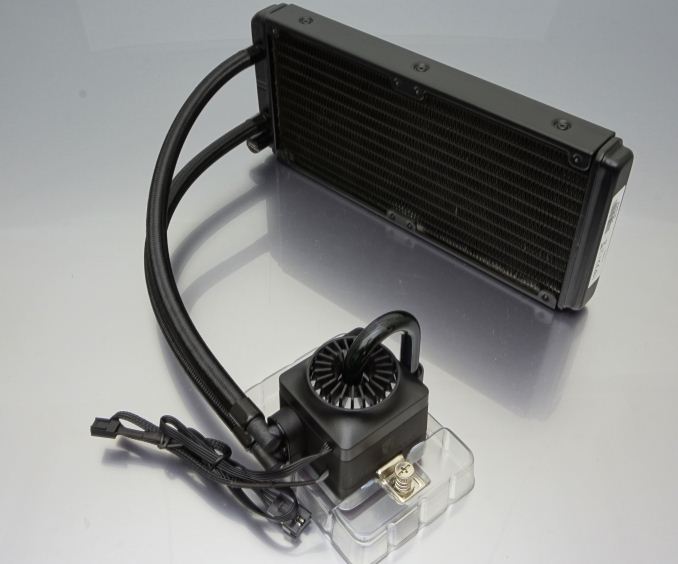
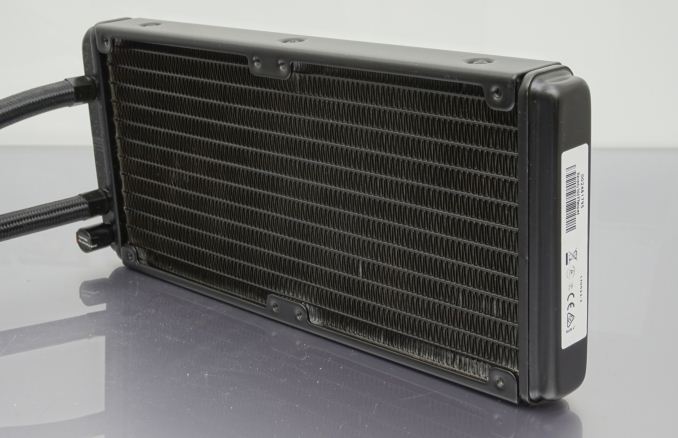
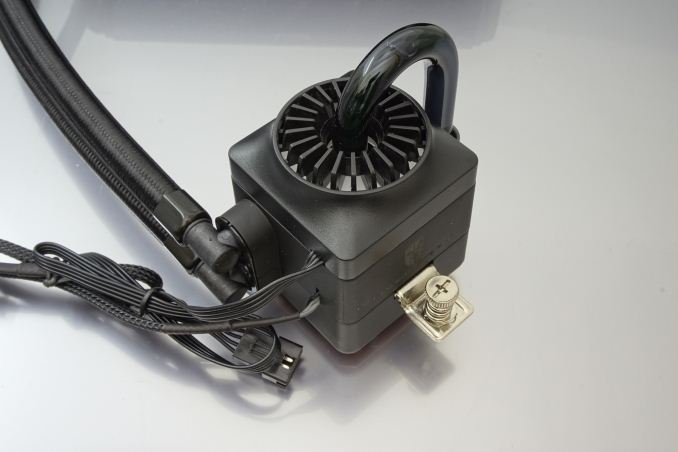
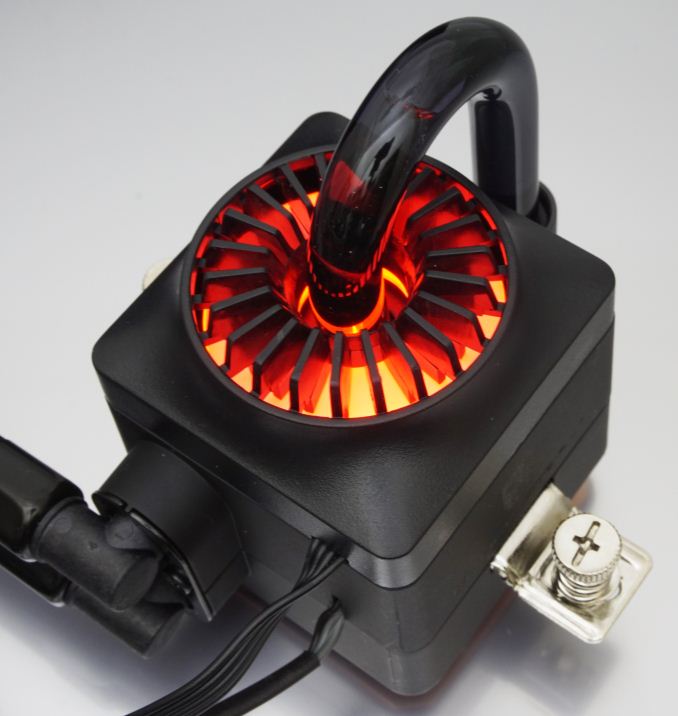

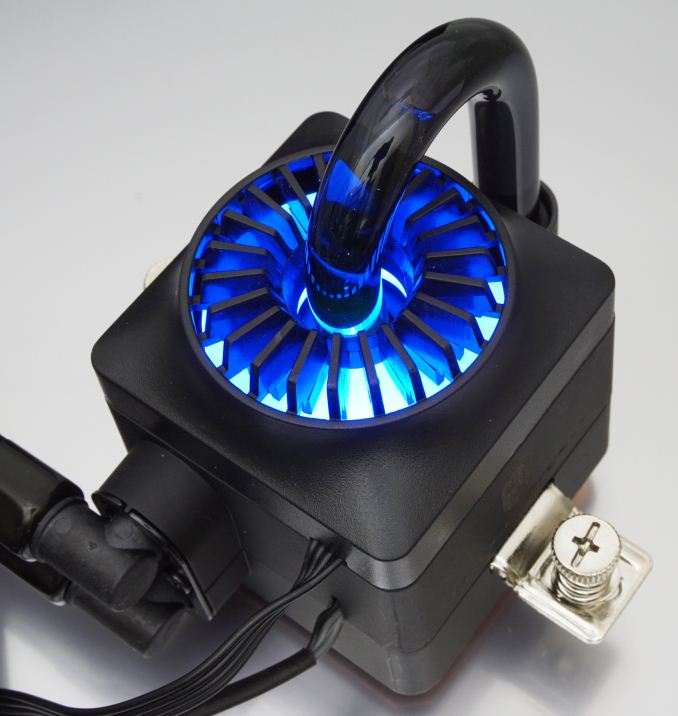

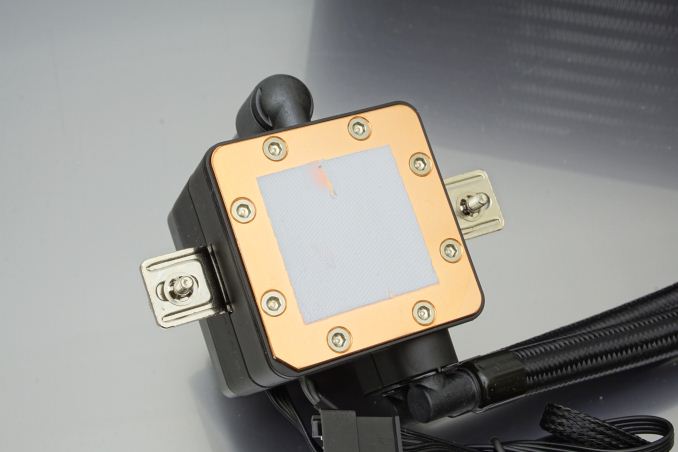








34 Comments
View All Comments
Galid - Thursday, December 14, 2017 - link
By the time you whined about how things should be done, I had two pages opened, I can tell you this: you get lower noise on air coolers in most scenario but delta over ambient on the worst AIO is lower than the best air cooler at 150w load.I would have loved it if there was two relevant air coolers included in these graphs but nothing to write a page about.
bananaforscale - Wednesday, June 20, 2018 - link
You are asking for apples to apples comparisons on coolers with requirements *that aren't the same* (packaging is a huge deal), therefore your logic breaks down.kevbev89 - Thursday, December 14, 2017 - link
I agree with what tricomp and rtfmx9 said... the "apples to apples" reasoning doesn't apply here. From personal experience a ton of people are always asking is water cooling better than air. From a functional standpoint they both serve the same exact purpose.jabber - Thursday, December 14, 2017 - link
I buy AIO coolers mainly because I don't care about getting max cooling efficiency and I think AIO coolers just look far far better than chunks of chrome plated tin in my rig. I'm sure I'm not the only one.Yuriman - Friday, December 15, 2017 - link
I'm sure you're not. I personally have a side panel on my case and can't see the cooler, so effectiveness and price (value) are the factors important to me.SilthDraeth - Thursday, December 14, 2017 - link
I am so glad that you are here to tell your audience that they are wrong and they don't actually want the products compared, despite the numerous comments suggesting and requesting a direct comparison. You must work for Apple. Even though we all ask for the comparison, and believe that they are competing with each other (after all, they serve the same purpose, cooling your system, so I fail to see how you can't correlate that they would be competing for our dollars), yet, we should just forget our own thoughts, and jump on your bandwagon of no need to compare in the review because they are entirely different types of cooling...Then you finish it off with your condescending "the magic of our professional equipment" line, and "you can easily go look up previous reviews the the information you want" attitude. You are the one being payed to write these reviews. Yes a ton of use have used the past data to find things, but it isn't always so clear cut, if you can't remember an exact model name, or as has happened, the data isn't on the site anymore, or is a bear to find.
Seriously, in the past, I remember they used to have a drop down menu with all the reviewed GPU, or CPU and it was easy to find the information. I don't see that anymore, since the site got redesigned.
So get off your high horse, and lose the snarky attitude. I swear, since Purch bought Anandtech the quality and the attitude has stunk.
SilthDraeth - Thursday, December 14, 2017 - link
Ok, I found the the area I was referencing. "Bench" at the top of the site and yes, the cooling data is in there. Though, I would hope the methodology has remained constant.DanNeely - Thursday, December 14, 2017 - link
It probably is. For other tests when methodology changes the benchmark name changes; which is why you've got things like "GPU 2017".PeachNCream - Thursday, December 14, 2017 - link
Air coolers and liquid coolers absolutely are direct competition with one another and I think it's incorrect to state that they're not. It'd be helpful to a number of readers to include a couple of air coolers (maybe the OEM sorts to form a baseline and one or two aftermarket models) without telling your readers to go fish in old articles. :(normadize - Friday, December 15, 2017 - link
A rather disappointing comment, especially coming from AT. You claim testing is repetitive and that we can look at (much) older reviews and trust the numbers are comparable.While you are not exactly an engineer, you could document yourselves a little better. The ambient temperature could not have been exactly the same. You persist in showing delta above ambient in all your reviews, which is an incredibly misleading figure for anyone without an engineering background: temperature does not have a linear dependency with the causing factors (e.g. power draw increases quadratically with frequency, etc) and the same goes for ambient temperature. Heat up your room by 20C and then run the exact same tests and you'll see different delta-over-ambient figures.
You should stop showing delta-over-ambient and instead include ambient temp and device temp in each of your graph. That's far more informative.